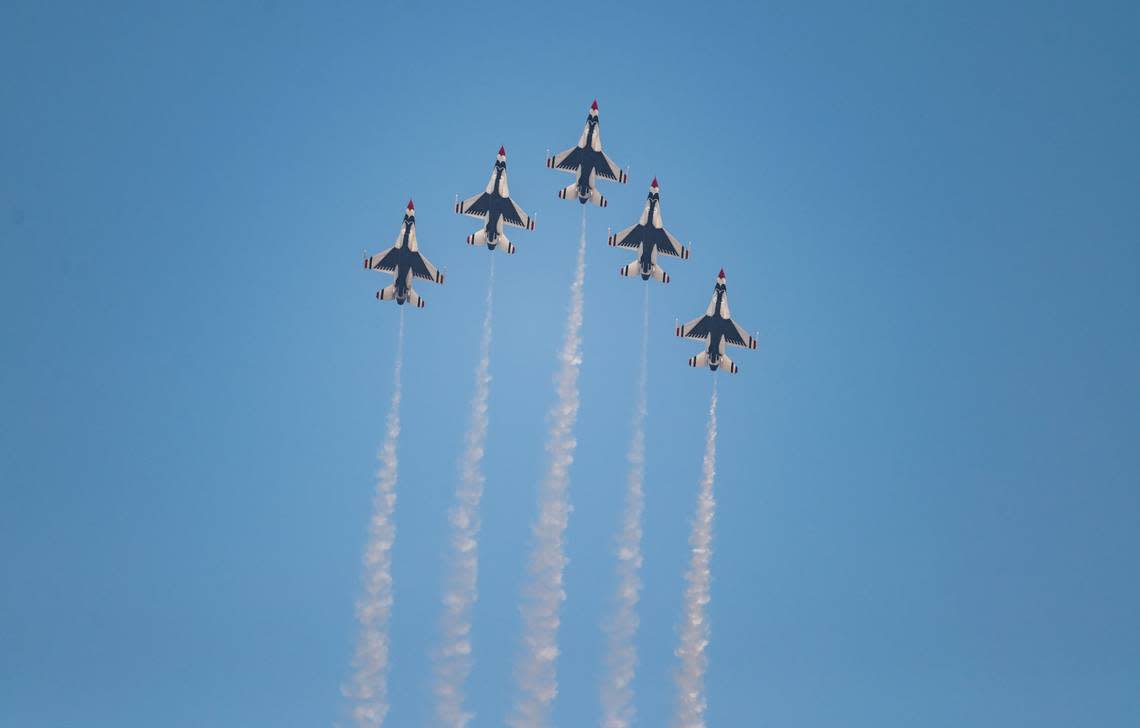California Capital Airshow official explains why this event is safer than Reno Air Races

The crash that killed two pilots at the National Championship Air Races in Reno on Sunday came less than a week before this weekend’s California Capital Airshow, bringing safety to the forefront of the two-day event held 100 miles west at Mather Airport in Sacramento starting Saturday.
Accidents are not uncommon at air shows and races. There have been at least nine reported accidents at air shows and races throughout the world since 2020, with eight resulting in pilot fatalities, though none involved spectators. That includes two deadly accidents at the Reno Air Races over the past two years.
A study from Johns Hopkins Bloomberg School of Public Health estimated there was a ratio of 31 crashes per 1,000 air events from 1993 to 2013, but when it comes to safety, there is a difference between races and exhibitions, one Capital Airshow official said.
“Air shows are significantly different than air races,” said Dennis Dunbar, Air Operations Director for the California Capital Airshow. “The air show industry as a whole is generally the envy of the motorsports industry when it comes to spectator safety.”
Rules are put in place to keep spectators safe while airplanes perform at hundreds of miles an hour in the skies above. Regulations stipulate small planes must stay 500 feet from spectators while jets often remain 1,500 feet away during exhibitions.
“Aircraft have different category lines that they have to fly on that maintain a certain distance from the crowd based on airspeed,” Dunbar said. “And the results of these rules that were put in place — we don’t have the spectator or fatalities that you may see with other motorsport events, including air races.”
Dunbar also runs the EAA AirVenture in Oshkosh, Wisconsin, considered the largest air show in the world, which drew about 677,000 people during week-long festivities in late July. He is also responsible for the Sun ’n Fun Aerospace Expo, held each spring in Lakeland, Florida.
Dunbar said there haven’t been any spectator fatalities at an air show in North America in some 70 years.
“The pilots that are performing at an air show, it’s exhibition flying,” Dunbar said. “(They’re doing) routines that they’ve done hundreds or thousands of times before. It’s not a competition like a race might be. Everything the performers are doing is entirely scripted.
“... (Racers) are flying their airplanes to the max edge of performance. They’re flying aircraft fast beyond what they were designed for. We’re actually flying well within the envelope of the airplane, what it was designed to do. We don’t take the airplanes past designed standards. We don’t push the limits.”
Performers at air shows must pass requirements issued by the FAA, perform in front of an examiner and accrue a requisite number of hours performing. And in the week leading up to this weekend’s air show in Sacramento, performers had closed sessions at Mather Airport to get acclimated to their surroundings.
This weekend marks the Capital Airshow’s 17th edition. It will include roughly 20 performances from pilots and their planes over two days. One highlight will be the U.S. Air Force Thunderbirds — a group of F-16 Fighting Falcons that fly in formation just feet apart.
The event runs from 9 a.m. to 5 p.m. Saturday and Sunday. Performances are scheduled from noon to 4 p.m.

